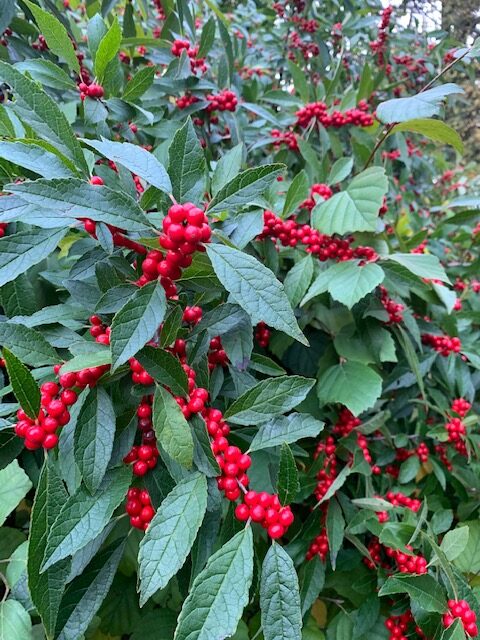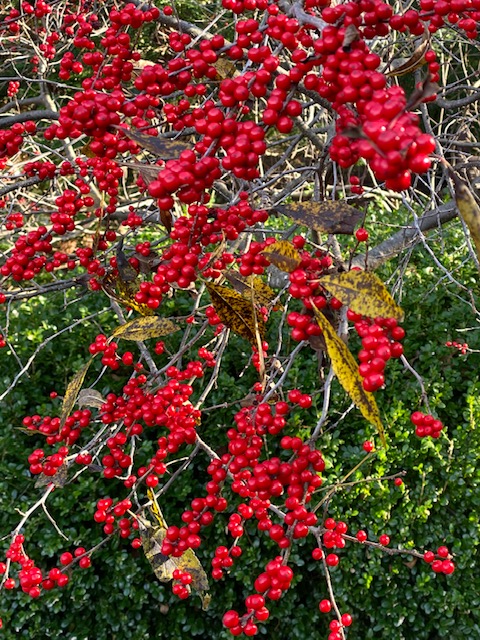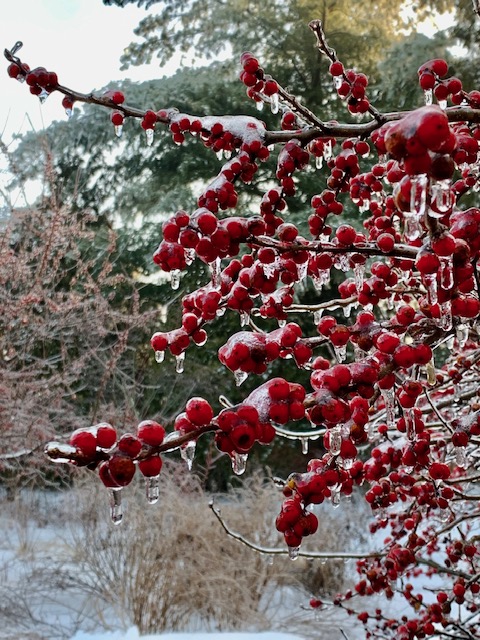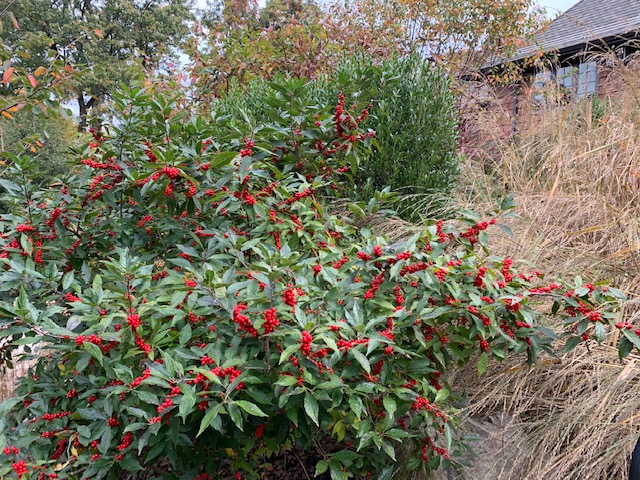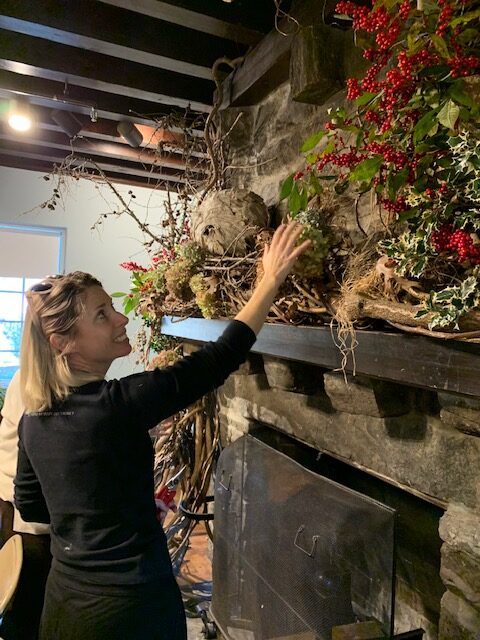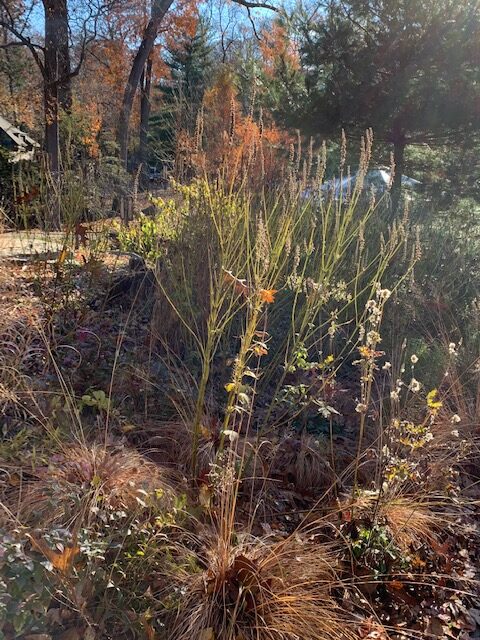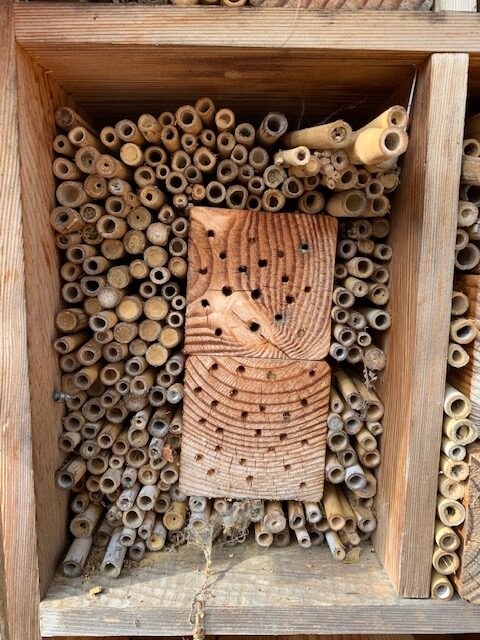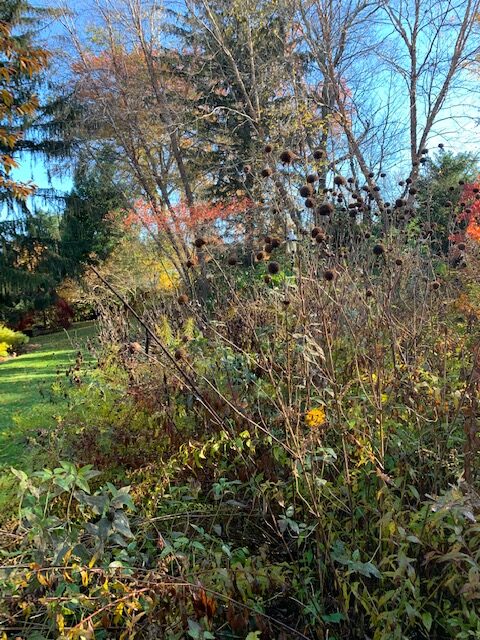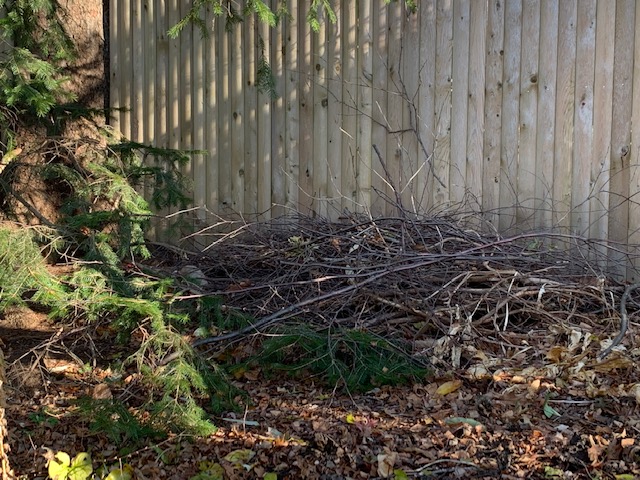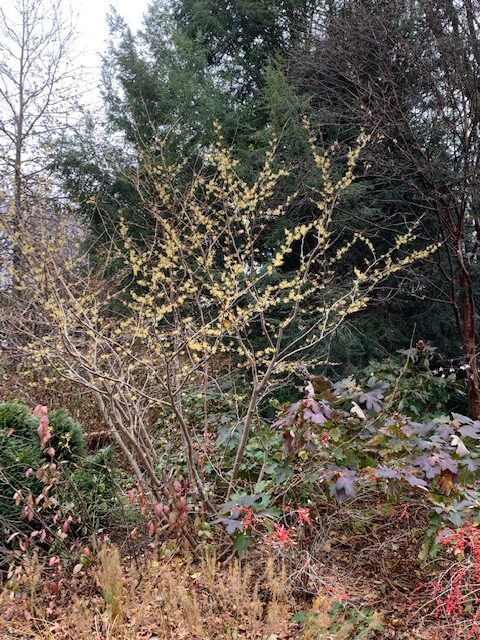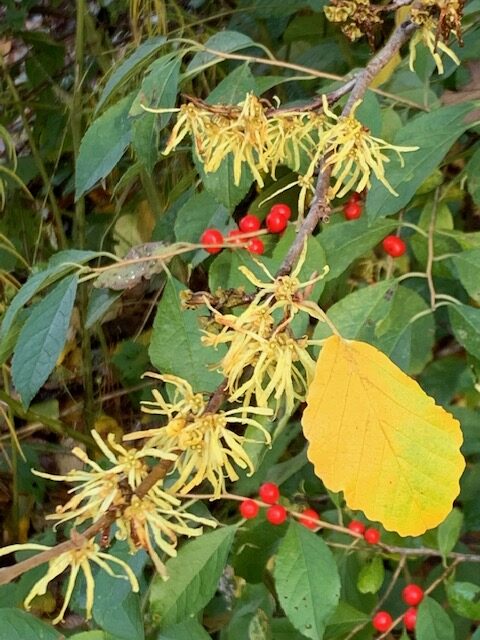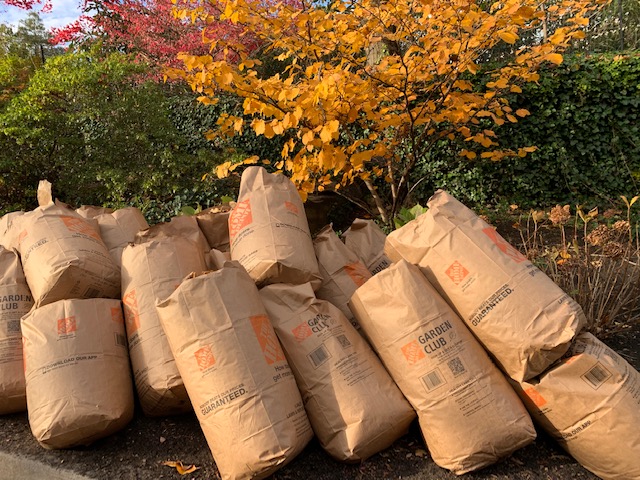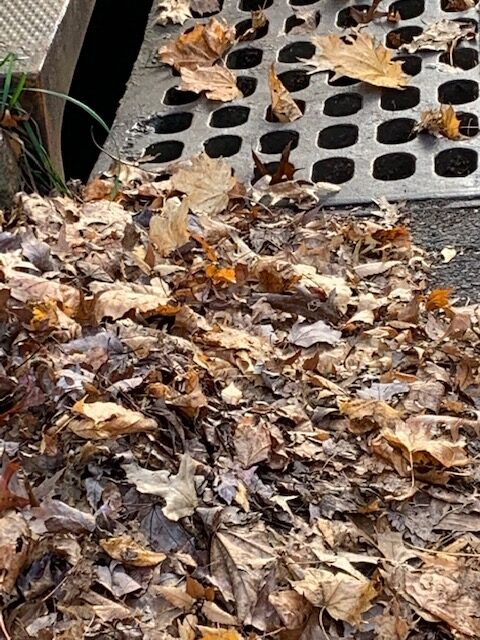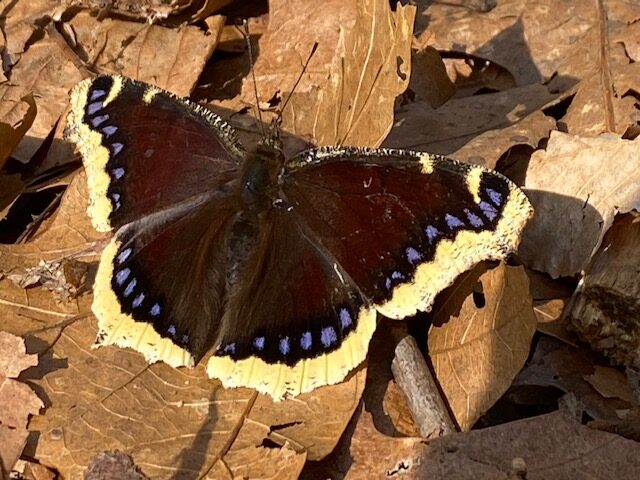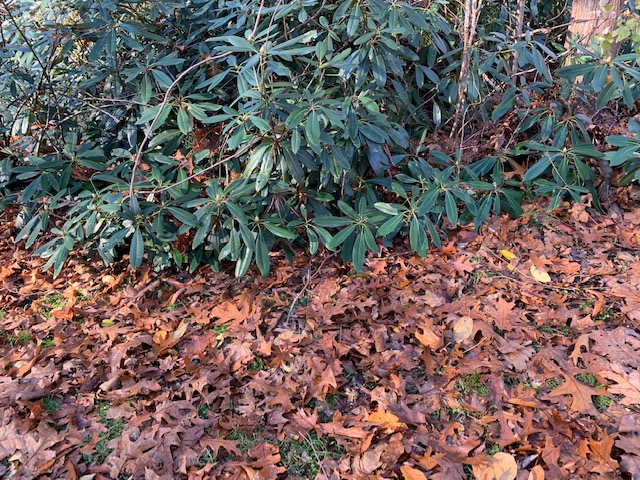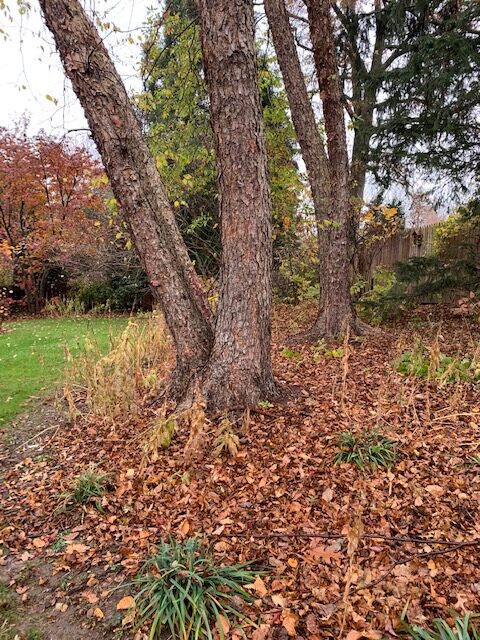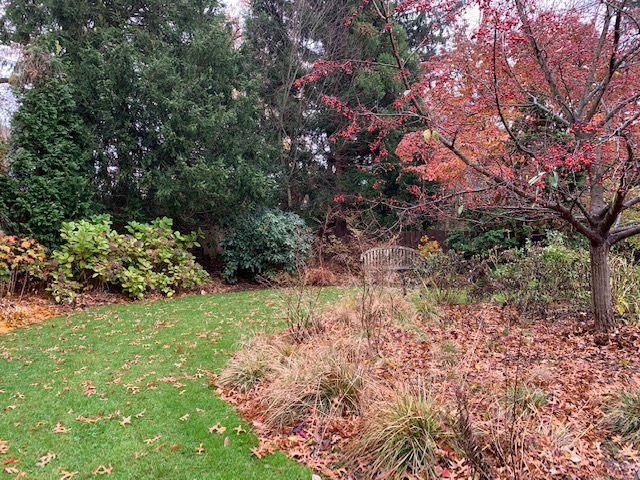Holly has been associated with winter holidays since long before Christmas celebrations began. It is thought that ancient Romans decorated with holly for Saturnalia, the winter feast in honor of Saturn. Druids and Celts believed the plant had magical powers because while all other trees lost their leaves, the holly not only stayed green, but displayed brilliant red berries in the darkest days of winter. So, holly branches have been cut and used for winter decorations for thousands of years. Our seasonal color scheme of red and green no doubt originated with holly.
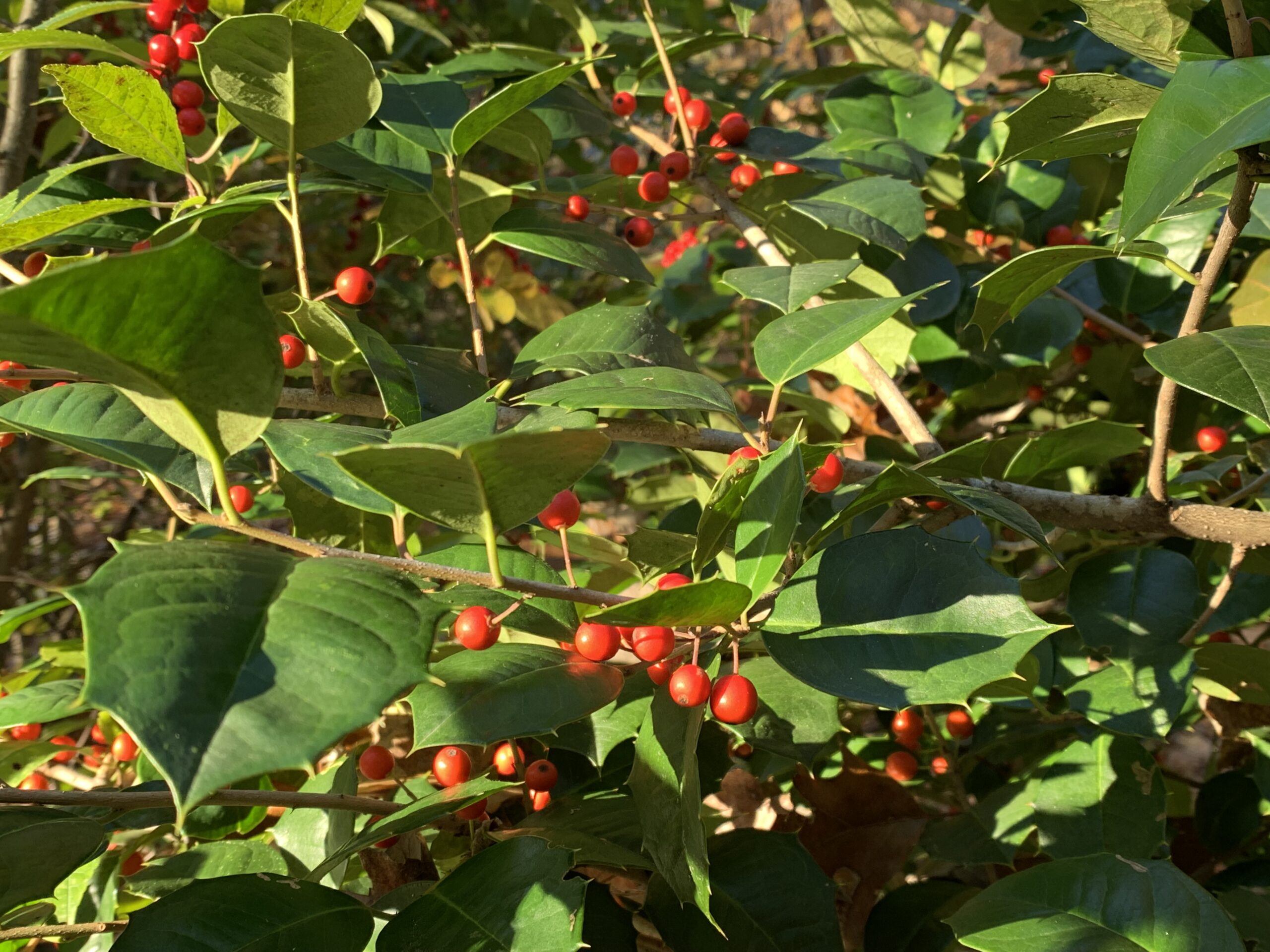
How fortunate that European settlers in the American colonies found a new species of their favorite winter plant growing here! American holly (Ilex opaca) differs from European holly in subtle ways and it can be difficult to tell them apart. The leaves of the American holly are not as shiny as the European variety, and the berries are often single rather than in clusters.
American holly trees typically grow 15 to 40 feet tall and 8 to 15 feet wide, but they can reach 60 feet where they are happy. They prefer well-drained, moist, acidic soil, and full sun for best berry production. Like other hollies, they are dioecious with male and female flowers on separate plants. For best fruiting, a male tree should be within 50 feet or so of the female.
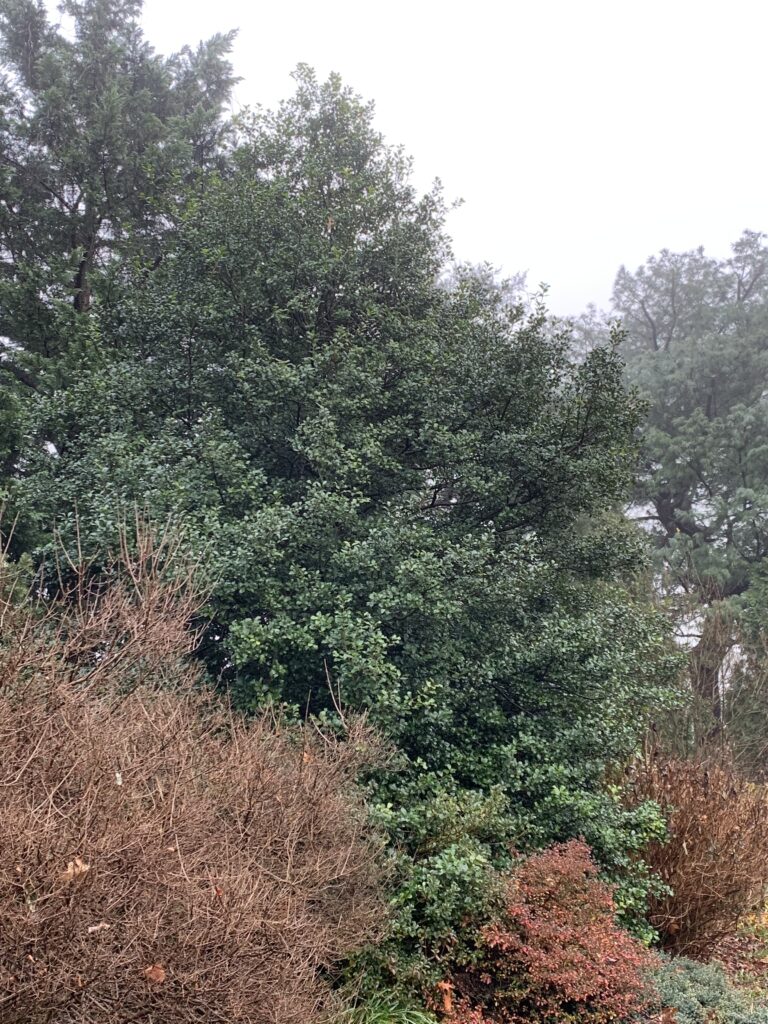
American holly is well-adapted to our area, of course, because it evolved here over thousands of years. It is less vulnerable to winter winds than many of the European varieties and it enjoys our acidic soil. It is a care-free evergreen and makes an effective year-round privacy screen. In a mixed evergreen border with Rhododendron maximum, White pine, and native junipers, it is not only attractive, but provides food and safe nesting habitat for birds.

And when the winter holidays are here? What better combo than White pine, Winterberry, and American holly for the cheeriest “winter interest” in the neighborhood?
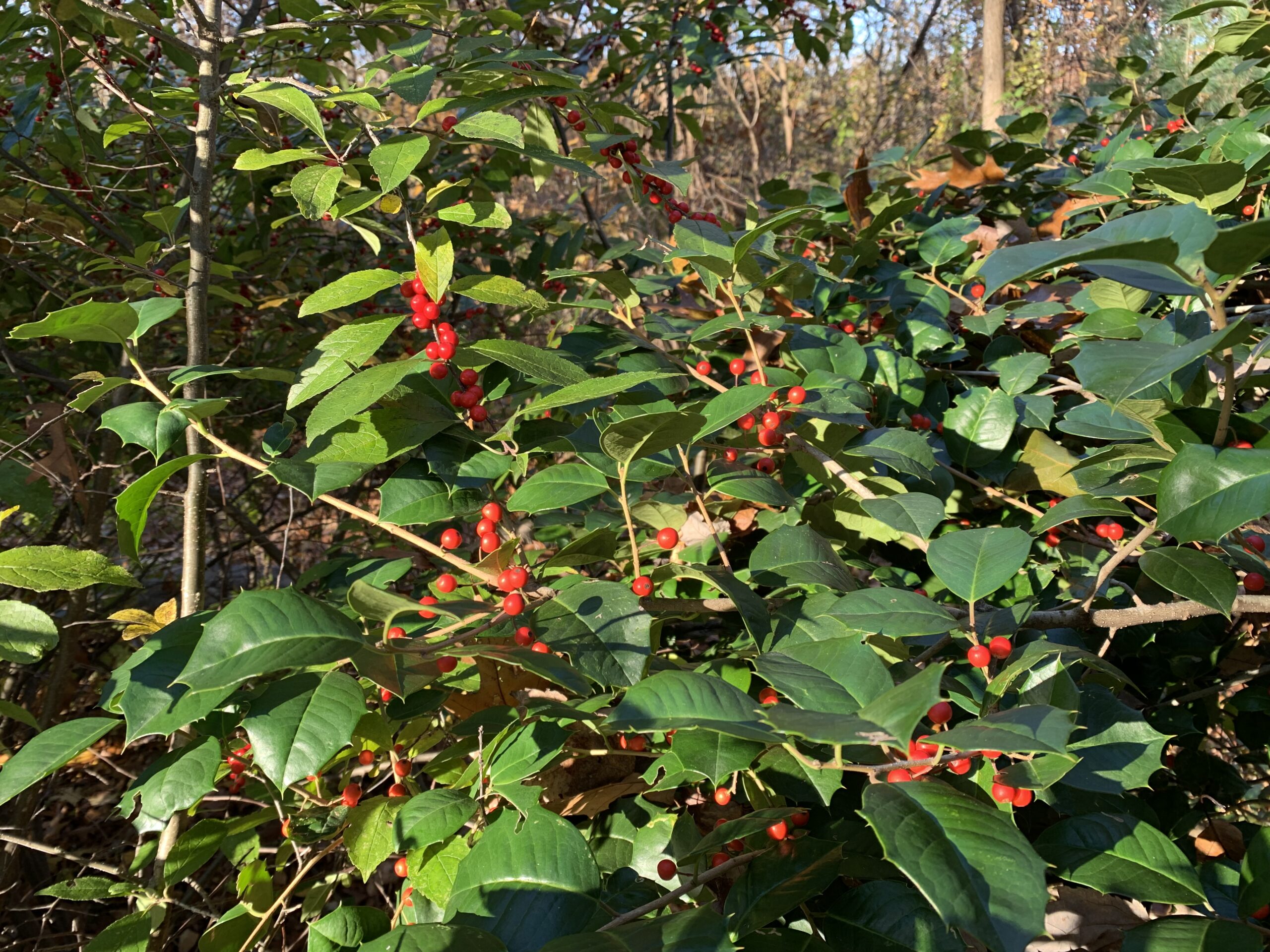
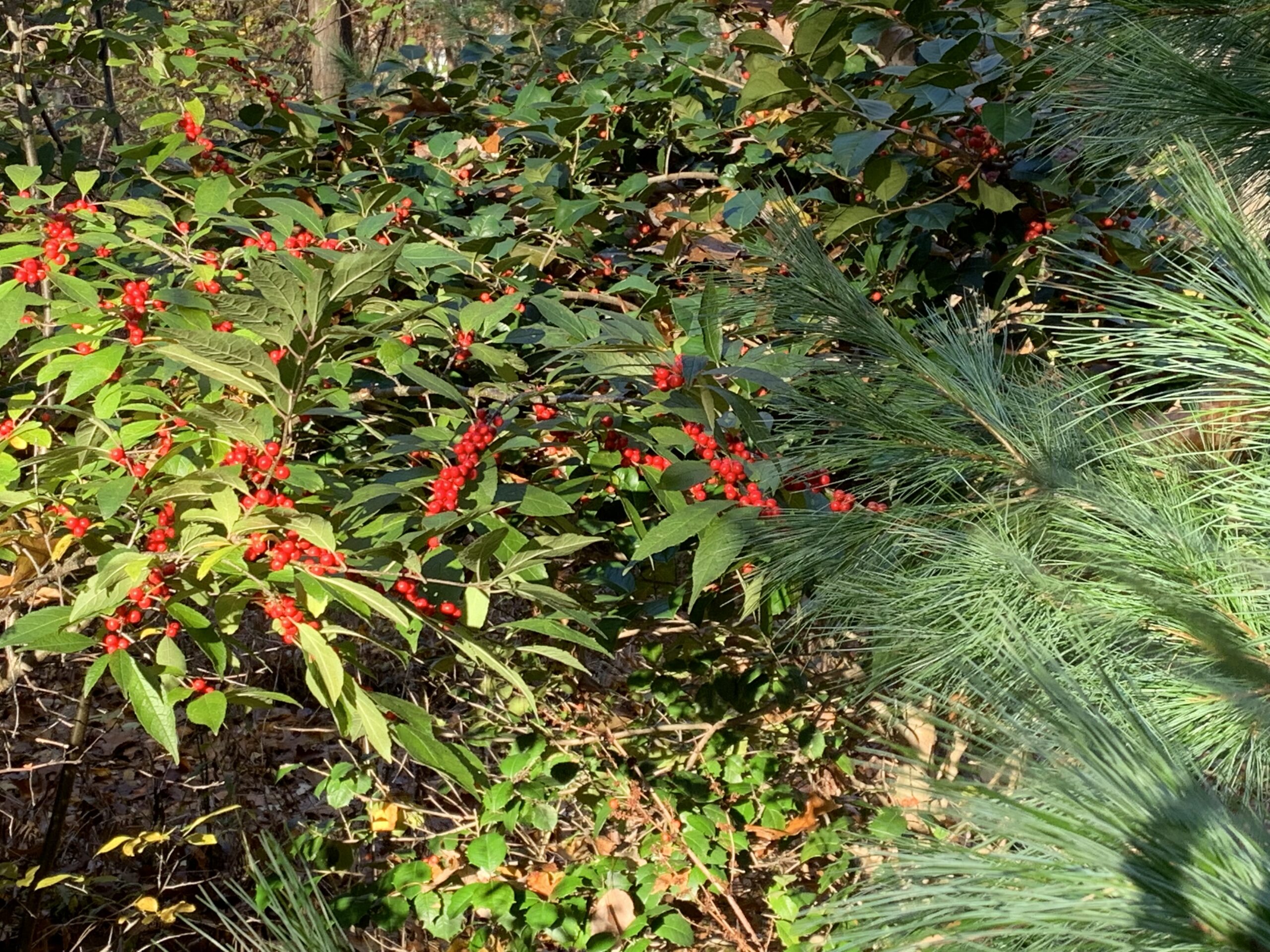
We think that’s just jolly!
This blog is authored weekly by Cathy Ludden, local expert and advocate for native plants; and Board Member, Greenburgh Nature Center. Follow Cathy on Instagram for more photos and gardening tips @cathyludden.

